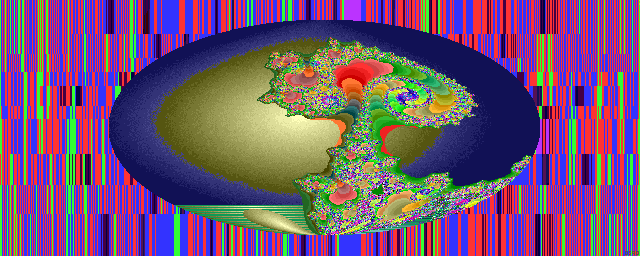![Newton5c by Stan Ostoja-Kotkowski, 1992 [PRG919/107/504]](/sites/default/files/styles/hero_large_1x/public/2020-11/Stan-Ostoja-Kotkowski-PRG919_107_504_Newton5c.png?itok=hnmPvaCd)
State Library project recovers lost artworks from the brink of extinction
Written by Kimberley Dye and Taryn Ellis
The State Library of South Australia holds a rich collection of material relating to the work of world-renowned artist Joseph Stanislaus (Stan) Ostoja-Kotkowski, including roughly eight hundred 3½ inch floppy disks created between 1988 and 1994. Stan was a pioneer in the digital arts and his archive has been accepted into the Australian register of the UNESCO Memory of the World. These valuable artworks were at risk of being lost if action wasn’t taken.
About the project
This project aimed to recover the digital artworks from the disks gifted to the library by Stan Ostoja-Kotkowski between 1988 and 1994. After approximately three months of meticulous work we were able to extract and convert all the images saved on these disks nearly 30 years ago. We also automated the collection of the relevant technical metadata, enabling the creation of detailed catalogue records which we hope will help scholars and art-lovers.
Knowledge of the existence of the digital component of Stan's extensive archive has excited the interest of academics for several years. This valuable digital preservation work has liberated these wonderful artworks from our storage collections, making them more accessible to researchers, and revealing them, perhaps for the first time, to the wider community.
Of course the library’s preservation responsibilities for this material don’t end here. The files are now ready for ingest into the library’s newly acquired Preservica Digital Preservation System where they will be managed for future generations.
The TECHNICAL process
The artworks were created on an Archimedes PC using the RISC operating system. This can be fairly difficult data to deal with as the files are:
- created in obsolete software
- stored on at-risk magnetic hardware, and
- consists of complex objects of high significance.
It was helpful to find that our Ostoja-Kotkowski holdings include slides taken by the artist of these files displayed on his Archimedes PC – meaning we have a primary source to look to when we are making decisions around the migration/replication of his work.
In working to preserve this material and to make it accessible, our first step is to create an image of the contents of the floppy disk using an old-fashioned disk-drive and the program Omniflop. We then need to extract the files from the disk image and create an access copy that’s recognised by contemporary operating systems (we chose the PNG format). At first we planned to use the emulation software Virtual Acorn, but an examination of the resulting PNGs showed that not all the files on the disks were supported by the emulator and there were some inconsistencies with the aspect ratio of the converted access files.

‘SPHRETREE’ from emulator
![‘SPHRETREE’ with correct aspect ratio [PRD919/107/20]](/sites/default/files/inline-images/Stan-Ostoja-Kotkowski-PRG919_107_20_SPHRETREE.png)
‘SPHRETREE’ with correct aspect ratio [PRD919/107/20]
After a lot of online research and some custom-coding, we were able to automate this process, but about halfway through the project we noticed that there was a significant shift in the colours being rendered in the converted .PNG files.

Grain-1, OO-3, and RainbowFl had distinctly pastel hues.
We compared these to the photographic slides (‘screenshots’!) that Stan had made of his computer monitor, and determined that these colours were not what the artist had intended.
When we opened some of these files in the emulator we could see that not only did the emulator’s versions match the slides, but the artist-defined colour palette was not representative of the colours in the images. Something had changed in Stan’s practice...
We believe that this demonstrates a new stage in Stan’s development as a digital artist, where he began using the early computer programs in a more customised and sophisticated way.
 We were able to extract the ‘correct versions’ from the emulator and you can clearly see the colour difference.
We were able to extract the ‘correct versions’ from the emulator and you can clearly see the colour difference.
To resolve this colour discrepancy, we needed to do yet more research. Accessing each image via the emulator wasn’t a solution: not only were we keen to automate as much of this process as possible, but we'd also established that at least half the collection consisted of custom file-types that the emulator didn’t recognise.
Our tenacity paid off and we were able to programmatically extract and convert all the images Stan Ostoja-Kotkowski had saved on these disks.